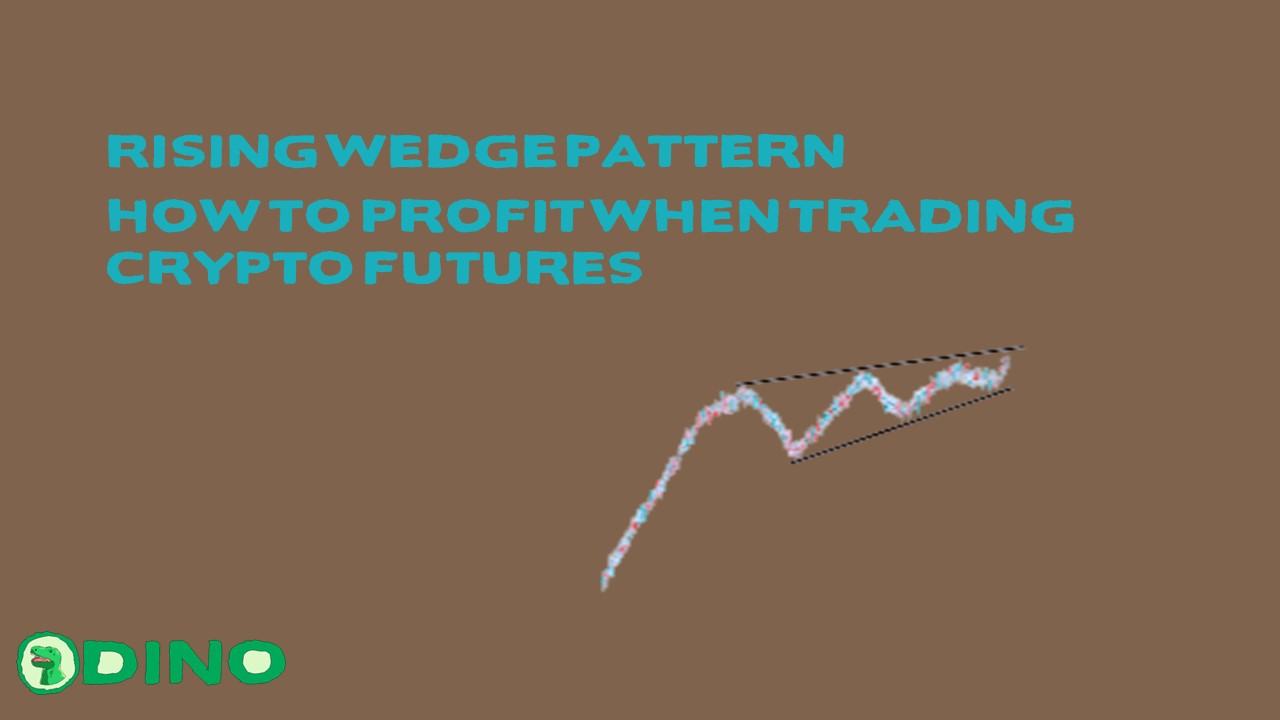A rising wedge is one of the patterns in technical analysis that can generally be used to predict price movements.
Traders commonly use this pattern to make predictions and, at the same time, risk management so that capital can survive in the long term. In this article, we will explain the rising wedge pattern and how to use it for trading in the crypto futures market.
What is the Rising Wedge Pattern?
Four steps are generally carried out in the technical analysis of financial markets, including crypto. One of these steps is to seek confirmation before making a transaction or opening a position while trading.
One way to get this confirmation is to look at chart patterns where the chart pattern will indicate whether the price is likely to go up or down.
The pattern that is commonly used is the wedge pattern, one of which is the rising wedge pattern, which is a pattern to indicate the continuation of price movements.
The continuation in question is where a price has moved down, then rose and continued to fall again. So this pattern is also more often used in the short term to see when an up move will finish and start to fall.
The rising wedge is more commonly used to predict when price movements will start to fall. These conditions are used for traders to cut losses when making purchases and can also be short positions.
In derivatives markets such as futures, a trader can sell an asset without owning the investment using a short mechanism. With this mechanism, a trader can make a profit when the price of an asset moves down. This advantage becomes more relevant through this pattern because it can be a guide when trading.
The Rising Wedge Pattern Type
The rising wedge has the same shape where there is a triangle shape that moves up where in trend movements, the upper and lower limits move conical.
Although they generally have the same shape, two types of rising wedge patterns also provide different price movements. The two kinds of rising wedges in question are those that move up steeply and relatively flat.
The first is the flat, rising wedge pattern, where in this pattern, the correction will generally occur slowly and not as drastic as the next pole. This pattern is usually described by the movement of price appreciation, which also tends to be slow.
The point is that the upward movement depicted from the flat, rising wedge generally looks like a not drastic appreciation. The number of red candlesticks is slightly different from the green candlesticks.
Therefore, generally, after a flat, rising wedge pattern, the price will correct slowly, but the percentage can be the same as the following.
The second is the steep rising wedge pattern, where the correction will generally occur drastically and quickly in this pattern. In the previous pattern, naturally, consolidation will come after the correction, and after that, the correction will continue.
In this pattern, generally, the correction will occur drastically, and consolidation will come long after the correction appears. You can see, for example, in the picture above, where the two candlesticks used are daily candlesticks, so they are balanced. Both of these patterns can be used to seek profit but need different risk management to maintain capital.
How to Find the Rising Wedge Pattern
To use this pattern, traders must understand how to find the rising wedge to take advantage of it when trading. There are three ways to find this movement pattern.
The first way is to draw manually with the tools given on the chart, like tradingview.
The step is to draw one of the limits of the movement first, for example, finding the upper limit of an increasing price movement.
The next step is to look at the lower limit, likely to form the rising wedge pattern where the movement is more conical, forming a triangle.
Generally, this pattern can be found after the price has moved down significantly, moved sideways, consolidated, and started to rise slowly. To complete this pattern discovery, traders can use the second-way indicators.
The second way is to use the volume indicator to find conditions where the selling volume has started to be saturated, excessive, or oversold. With oversold conditions, generally, the price will start moving up to normalize the movement.
For example, as in the picture above, where after oversold conditions occur, the chart forms a rising wedge pattern and then continues to move down. So a volume indicator like the RSI can be used to help look for this pattern.
The third way is to find a more precise correction or trend movement on the more extensive timeframe chart.
For example, in the daily chart, the price will move down and rise before falling again. But on the weekly chart, the price will continue to show a descending trend, reinforcing the view that a correction is imminent. So traders can take advantage of analysis with higher chart timeframes to spot a potential rising wedge along with confirmation that strengthens the analysis.
Profiting from the Rising Wedge Pattern
After understanding the rising wedge and how to find it when analyzing the charts, the final step is to seek profit and manage risk through this pattern. Looking for a profit with the rising wedge is the same as doing a price action analysis.
The trick is using support and resistance to find profit targets, maintain risk, and use additional confirmation with candlestick patterns.

An example is the picture above, where the rising wedge can be used to find profit by setting a “Take Profit” target and maintaining risk management above the pattern with a “Stop Loss”.
The pattern can also be a help in determining the price area that can be used to enter or open a short position.
So that this pattern can be used to seek profit if it is adjusted to the strategy and personal financial management.
If you already understand how to determine this pattern, traders should be able to use it to seek profit.
But please note that this pattern is not always accurate because volatility in the crypto market can make movements change drastically.
More News About Crypto : NEWS
Follow our Twitter : https://twitter.com/DinoDapps




